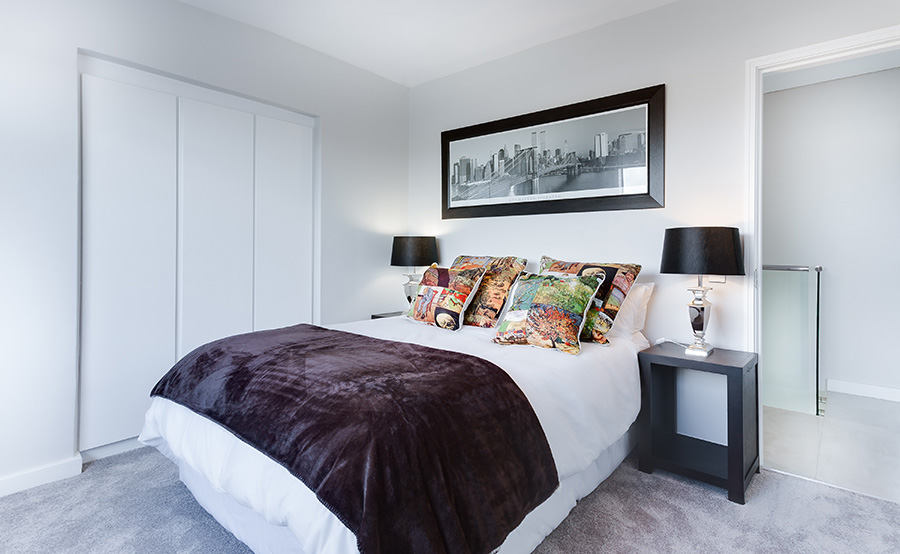A peaceful and restful sleep is essential for overall well-being and productivity. The bedroom serves as a sanctuary for quality sleep, and certain elements can be optimized to promote a tranquil ambiance. In this article, we will guide you on how to create an environment that facilitates deep and rejuvenating sleep.
Understanding the Importance of Deep Sleep
Deep sleep, the third stage of non-rapid eye movement (non-REM) sleep, is characterized by slower heart and breathing rates, as well as specific brain wave patterns. This stage plays a crucial role in vital processes such as consolidating memory, releasing growth hormones for organ and tissue repair, and preventing sleep disorders like bedwetting, night terrors, sleepwalking, and sleep-eating.
Interrupting deep sleep can lead to reduced mental function for a short period, known as sleep inertia, which often triggers a strong desire to return to sleep. By enhancing declarative memory, promoting the release of growth hormones, and facilitating bodily restoration, deep sleep optimizes overall well-being. However, it is also the time when sleep disorders are most likely to manifest.
Enhance Your Bedroom for a Peaceful Sleep Experience
To create a tranquil and conducive sleep environment, it’s important to eliminate noise, incorporate soothing colors, optimize lighting, choose the right bedding, add natural elements, and maintain cleanliness and decluttering. Let’s explore these aspects in detail:
1. Calming Colors for Serenity
When selecting colors for your bedroom, consider the desired ambiance and mood. Vibrant or high-contrast color schemes can be overwhelming, so opt for warm, subdued tones in areas meant for relaxation and brighter colors in spaces designated for productivity. Natural lighting should also influence your color choices. Embrace tranquil hues like dove grey, light coral, pale gold, pastel pink, spa blue, or pale celery green. Start with a neutral color scheme and introduce pops of color through decorative items like cushions, carpets, and artwork. Strive for a balanced and harmonious setting that soothes the eye.
2. Optimal Lighting Choices
Ceiling fans are great for cooling, but they can be too bright and disrupt sleep. Consider using soft-glowing lamps with natural light bulbs to create a more soothing ambiance. Dimmer switches allow you to adjust brightness according to your preferences. Instead of relying on a single central ceiling light, distribute multiple smaller lights at varying heights throughout the room. Opt for three-way light bulbs to precisely control light intensity. Lampshades with shiny gold paper lining and bulbs with appropriate color temperatures (e.g., cooler tones for concentration and warmer tones for relaxation) can enhance the overall effect.
3. Choosing the Right Bedding
Creating the ideal sleeping cocoon involves ensuring sufficient space, considering the needs of partners, children, and pets, and selecting crisp, high-thread-count, all-cotton linens. Soft blankets, a down comforter, and pillows with different densities and thicknesses add the final touches. Some bedding materials have moisture-wicking properties, enhancing comfort by absorbing excess moisture. If dust or mold allergies are a concern, experts recommend using allergen-proof mattress and pillow coverings, along with regular bedding cleaning. Consider using calming hues for your bedding to enhance relaxation.
4. Incorporating Natural Elements
Flowers and plants not only add color and liveliness but can also promote relaxation. Certain plants like snake plants, aloe vera, and lavender have been shown to improve air quality and reduce stress levels. Organic materials such as wood and stone can also contribute to a calming environment. Take advantage of the sleep-enhancing benefits that flowers offer, such as improved sleep quality and reduced stress. Consider having flowers like succulents, peace lilies, or gerbera daisies in your bedroom, as they can assist for a good night’s rest.
5. Block Out External Light
Investing in blackout curtains is an excellent choice for anyone seeking to enhance their sleep quality. These curtains effectively block out light, creating a quiet and dark environment that is conducive to a good night’s sleep. They also help regulate temperature and minimize noise, further improving your sleep environment. If you’re looking for a temporary solution, you can use items like sheets, tablecloths, scarves, or pashminas to reduce light and create a sense of seclusion. However, for a more long-term fix, consider purchasing blackout curtains or shades. Additionally, if you’re sensitive to noise, you can enhance privacy and quietness by adding soundproofing materials to your temporary curtain setup.
6. Remove Electronics from the Bedroom
Creating a sanctuary away from the constant barrage of news and digital distractions is essential for promoting sound sleep. Engage in self-care practices such as exercise, meditation, or reading a book before bed to reduce stress and prepare your mind for sleep. Seek support from loved ones or mental health professionals during challenging times. Research shows that electronic devices like televisions can interfere with sleep by keeping the mind active and disrupting the body’s natural sleep-wake cycle. The glow and blue light emitted by computer screens and LEDs also disrupt melatonin production. It’s advisable to avoid using screens before bedtime and instead focus on relaxing activities like reading or taking a warm bath. If you need to use electronic devices, consider using blue light filters or blue light-blocking eyewear. Establish an electronics embargo in the hour before bed and keep gadgets away from your sleeping area. Utilize “do not disturb” features or applications on your devices to filter out irrelevant notifications while you sleep.
7. Maintain Cleanliness and Declutter
A clutter-free and organized bedroom creates a more calming atmosphere. Ensure that everything in your bedroom has a designated place to “call home.” Keep bills, office or school documents, and other paperwork out of sight. Place clothing in a closed hamper, dishes in the kitchen, and dispose of garbage in a trashcan. Utilize storage options like dressers, shelves, or under-the-bed trays to keep items out of the way. Consider vertical storage solutions like wall-mounted shelves or hanging organizers to maximize storage capacity without taking up floor space. Regularly declutter and donate items to prevent the buildup of unnecessary belongings. Investing in furniture with built-in storage, such as nightstands with drawers or beds with storage compartments, can help maintain a distraction-free environment. A clutter-free bedroom promotes peace and tranquility.
8. Create a Cozy Atmosphere with a Fireplace or Sound Machine
Enhance the ambiance of your bedroom by incorporating elements that create a cozy and soothing environment. If feasible, consider installing a fireplace or using a fireplace sound machine. The crackling sound and warmth generated by a fireplace or simulated by a sound machine can create a relaxing atmosphere. These features can serve as focal points and enhance the overall attractiveness of your bedroom. A fireplace sound machine produces soothing background music while simulating the crackling and popping of flames, providing a warm and inviting ambiance after a long day.
9. Avoid Excessive Bedroom Accessories
In the bedroom, less is often more when it comes to accessories. Invest in multi-purpose furniture like storage ottomans or bedside tables with drawers to maximize functionality. Add comfortable elements like throw cushions and soft lighting to create a cozy atmosphere. Consider removing or finding alternative places for unnecessary bookcases or cabinets that take up space. Instead of adding decorative items, opt for accents with a purpose, such as a stylish storage box or a practical lamp. An overcrowded room can give the illusion of being smaller, so it’s important to strike a balance between functionality and aesthetics. Store old clothing in boxes to save space rather than keeping them on racks or using them as wall decor. Choose multi-purpose furniture pieces like beds with built-in storage or desks that double as vanities to optimize space utilization. By keeping the number of objects in your bedroom to a minimum, you can maximize its calming effect.
10. Soundproof Your Bedroom
If you or your partner are sensitive to noise or have different sleep schedules, incorporating soundproofing techniques can be beneficial. Rugs can help reduce noise in the bedroom, especially if one person wakes up while the other is still asleep. Place area rugs that cover the lower two-thirds of the bed, and consider upholstered furniture and beds as they provide better sound absorption. To create a polished look, ensure that the rug extends beyond the edges of the bed. Additionally, consider using white noise devices, as they have been shown to reduce the time it takes to fall asleep and improve sleep quality. White noise machines or apps can create a soothing environment and help mask disruptive sounds. If you have a snoring partner, earplugs and white noise may offer some relief, but it’s important to address persistent snoring or signs of sleep apnea with a healthcare professional.
By implementing these recommendations, you can transform your bedroom into a sleep-friendly haven and significantly enhance the quality of your sleep. Remember, creating an optimal sleep environment is an investment in your well-being and can lead to better physical and mental health.
Call Sweet Sleep Studio at (913) 309-5963 if you wish to learn more about the connection between your environment and great sleep.




